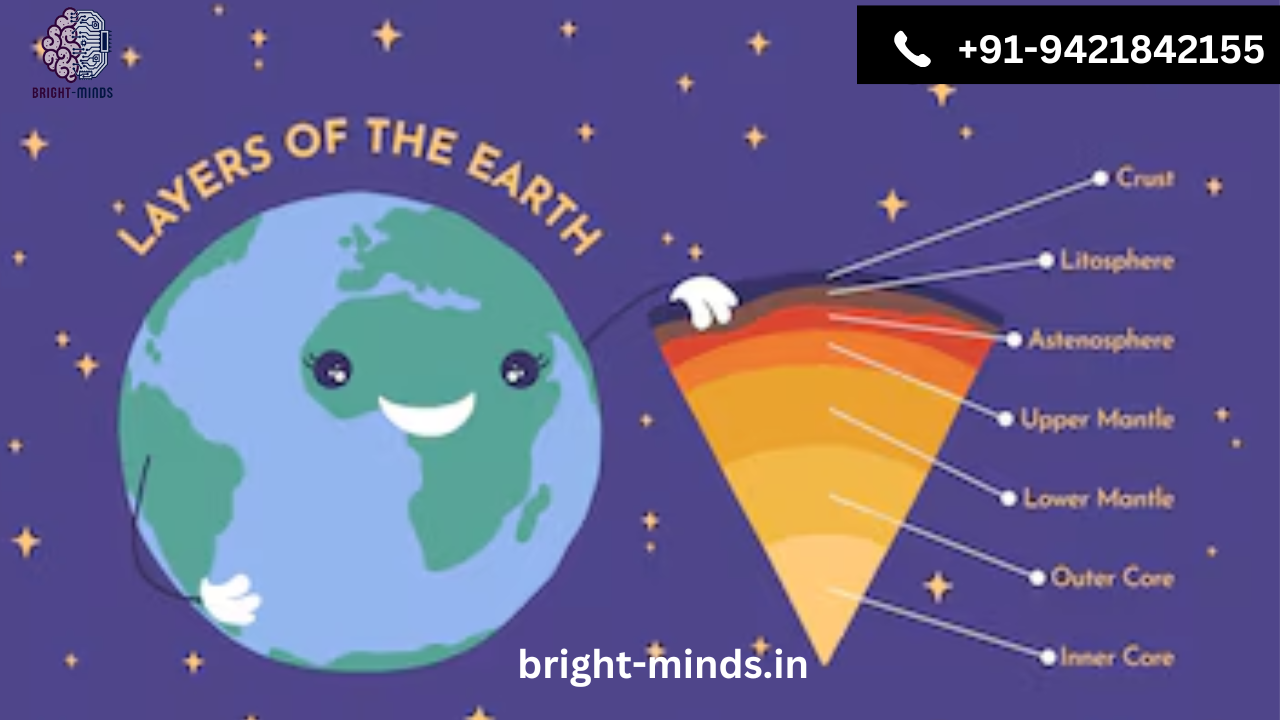Our planet Earth is a fascinating place to learn about, and one of the most exciting topics to explore is the Earth’s structure. The Earth is made up of many layers, each with its unique properties and characteristics. In this article, we will delve into the different layers of the Earth, how many layers there are, the thinnest and thickest layers, and some fascinating facts that will surely capture the imagination of young minds.
The Basics of the Earth’s Layers
Before we begin, let’s first understand the basic concept of the layers of the Earth. The Earth is made up of four primary layers, which are:
- Crust
- Mantle
- Outer Core
- Inner Core
These layers are not equal in thickness, and they vary in composition as well. Now, let’s explore each of these layers in more detail.
The Crust – The Earth’s Outermost Layer
The crust is the outermost layer of the Earth and is the one we live on. It is also the thinnest layer of the Earth, with an average thickness of about 30 kilometres (18 miles) under the continents and just 5 kilometres (3 miles) under the oceans. The crust is made up of solid rock, which is primarily composed of two types:
Continental Crust: This is the thicker part of the Earth’s crust, found under the continents. It is mainly composed of granite.
Oceanic Crust: This is the thinner part of the Earth’s crust, found under the oceans. It is primarily made up of basalt.
Some fascinating facts about the Earth’s crust include:
The Earth’s crust is broken into large pieces called tectonic plates. These plates are constantly moving, causing earthquakes and volcanic eruptions.
The highest point on the Earth’s crust is Mount Everest, at 8,848 metres (29,029 feet) above sea level.
The lowest point on the Earth’s crust is the Challenger Deep, located in the Mariana Trench, at around 10,994 metres (36,070 feet) below sea level.
The Mantle – The Thickest Layer of Earth
Located beneath the crust, the mantle is the thickest layer of Earth, with a thickness of approximately 2,900 kilometres (1,800 miles). The mantle is made up of solid rock, but due to the intense heat and pressure, it can flow like a thick liquid. This layer is divided into two parts:
Upper Mantle: The upper mantle is solid and is attached to the Earth’s crust, forming a rigid layer known as the lithosphere.
Lower Mantle: The lower mantle is a more fluid, semi-solid layer, which can move and flow.
Some fascinating facts about the Earth‘s mantle include:
The Earth’s mantle makes up about 84% of the Earth’s total volume.
The temperature in the mantle ranges from 500°C (932°F) near the crust to 4,000°C (7,232°F) near the core.
The movement of the mantle causes the tectonic plates to move, shaping the Earth’s surface through processes like mountain building and oceanic trench formation.
The Outer Core – A Sea of Liquid Metal
The outer core is the third layer of the Earth, situated beneath the mantle. It is composed of liquid metal, primarily iron and nickel, and has a thickness of about 2,200 kilometres (1,367 miles). The outer core’s movement creates the Earth’s magnetic field, which helps protect our planet from harmful solar radiation.
Some fascinating facts about the Earth’s outer core include:
The temperature in the outer core ranges from 4,000°C (7,232°F) to 6,000°C (10,832°F).
The Earth’s magnetic field, generated by the outer core, plays a crucial role in navigation, allowing compasses to work and helping migratory animals find their way.
Scientists believe that the movement of the liquid outer core is caused by the heat generated in the inner core, a process called convection.
The Inner Core – The Earth’s Solid Centre
The inner core is the final and deepest layer of the Earth, located at its very centre. It is a solid ball of metal, primarily composed of iron and nickel, with a radius of about 1,220 kilometres (758 miles). The inner core is extremely hot, with temperatures reaching up to 5,500°C (9,932°F), which is as hot as the surface of the sun.
Some fascinating facts about the Earth’s inner core include:
The inner core is under immense pressure, approximately 3 million times greater than the pressure we experience on the Earth’s surface.
Despite the extreme heat, the inner core remains solid due to the immense pressure it is subjected to.
Scientists believe that the inner core is slowly growing as the Earth cools down, with the outer core gradually solidifying onto the inner core.
The Importance of Studying the Earth’s Layers for Kids
Understanding the layers of the Earth is not only fascinating but also essential for kids, as it helps them develop a strong foundation in science and geography. By learning about the different layers of the Earth, kids can better comprehend how our planet has evolved over time and the various geological processes at work. Moreover, this knowledge can inspire curiosity and a sense of wonder about the natural world, fostering a lifelong love for learning and exploration.
Furthermore, studying the Earth’s layers can help children appreciate the importance of environmental conservation and sustainable living, as they learn how the Earth’s processes and resources are interconnected. By nurturing this understanding from a young age, we can empower the next generation to become responsible global citizens and guardians of our planet, ensuring a sustainable future for all.
In summary, the Earth is made up of four primary layers: the crust, mantle, outer core, and inner core. Each layer has its unique properties, composition, and role in shaping our planet. The thinnest layer of the Earth is the crust, while the thickest layer of Earth is the mantle. By understanding the different layers of the Earth, we can gain a deeper appreciation for the complex and dynamic processes that have shaped our planet over billions of years. Furthermore, this knowledge can help us better understand natural phenomena such as earthquakes, volcanic eruptions, and the Earth’s magnetic field.
So, the next time you look down at the ground or gaze up at the sky, remember that beneath your feet lies a fascinating world of layers, each playing a crucial role in making our planet the incredible and unique place it is today.
Also Read:
https://bright-minds.in/unlocking-word-meaning-for-class-ukg-english-to-hindi/

